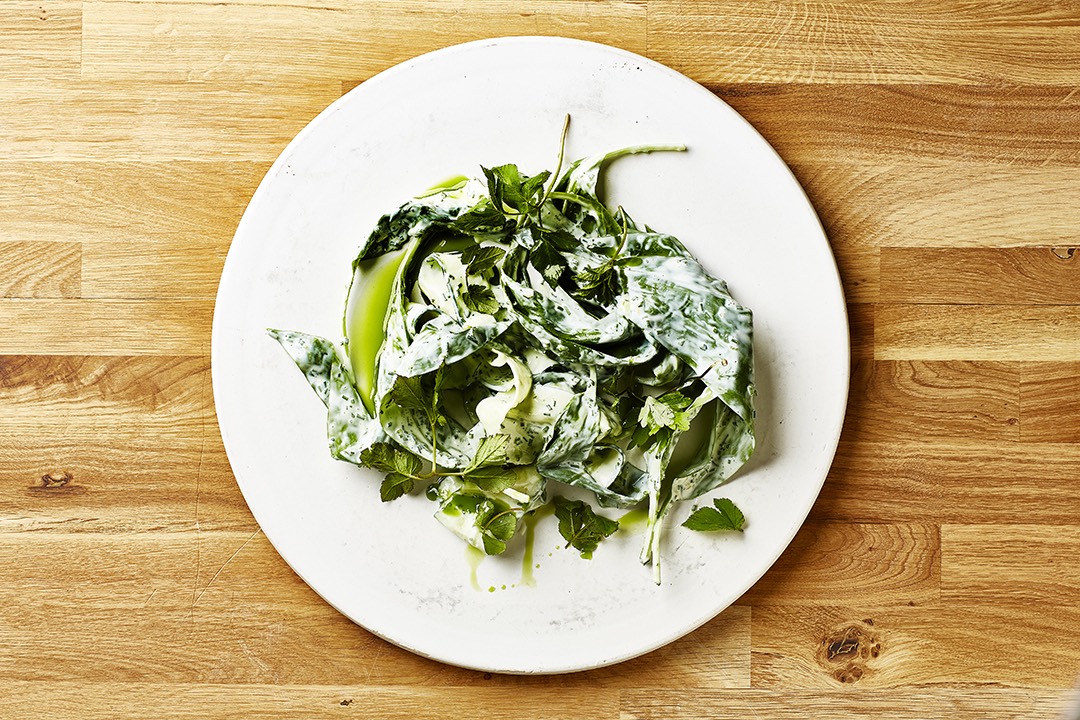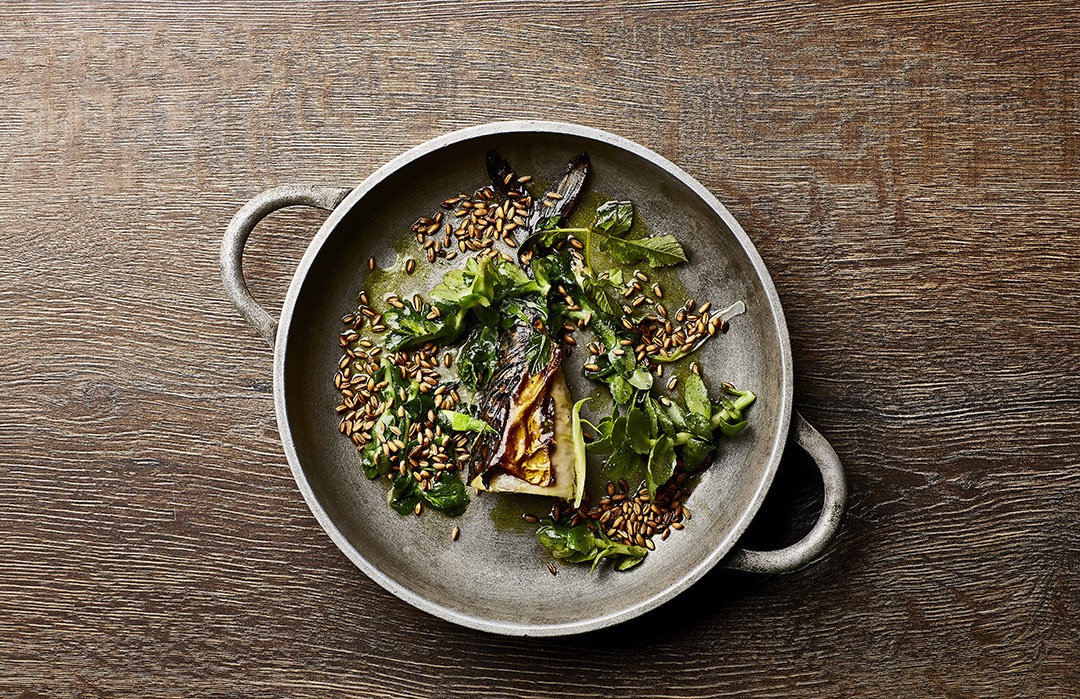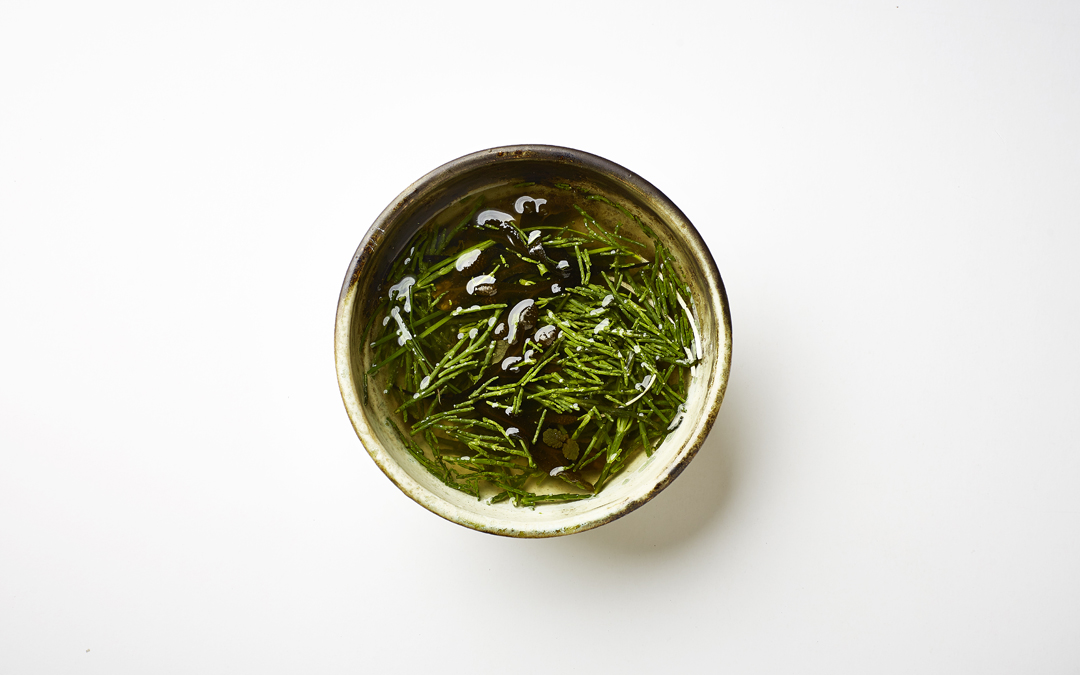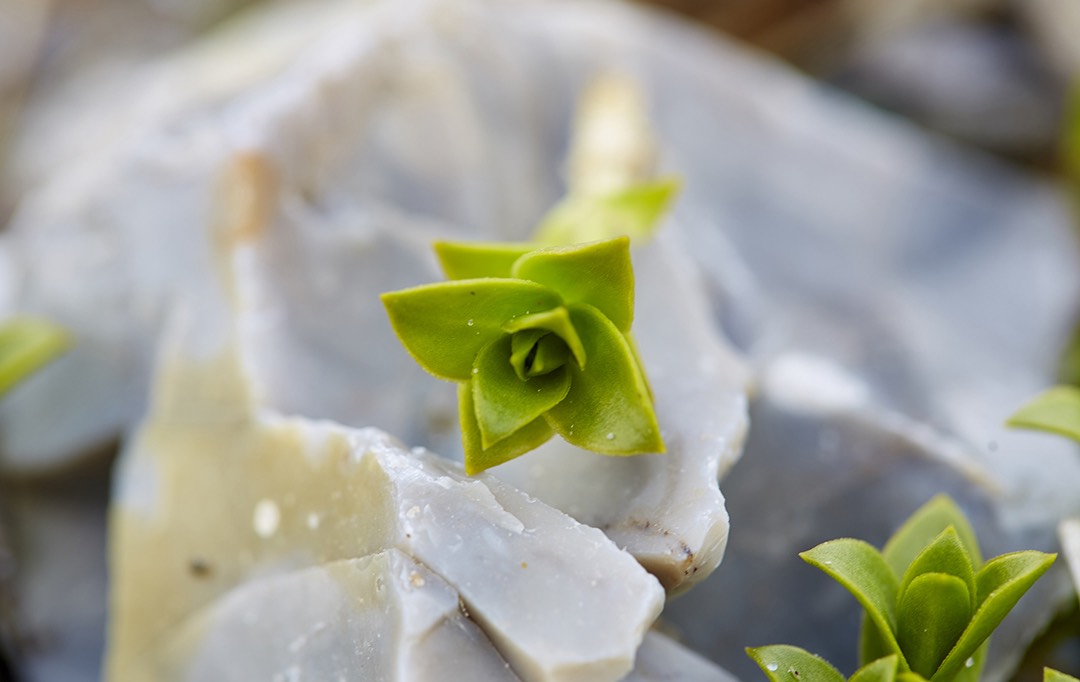
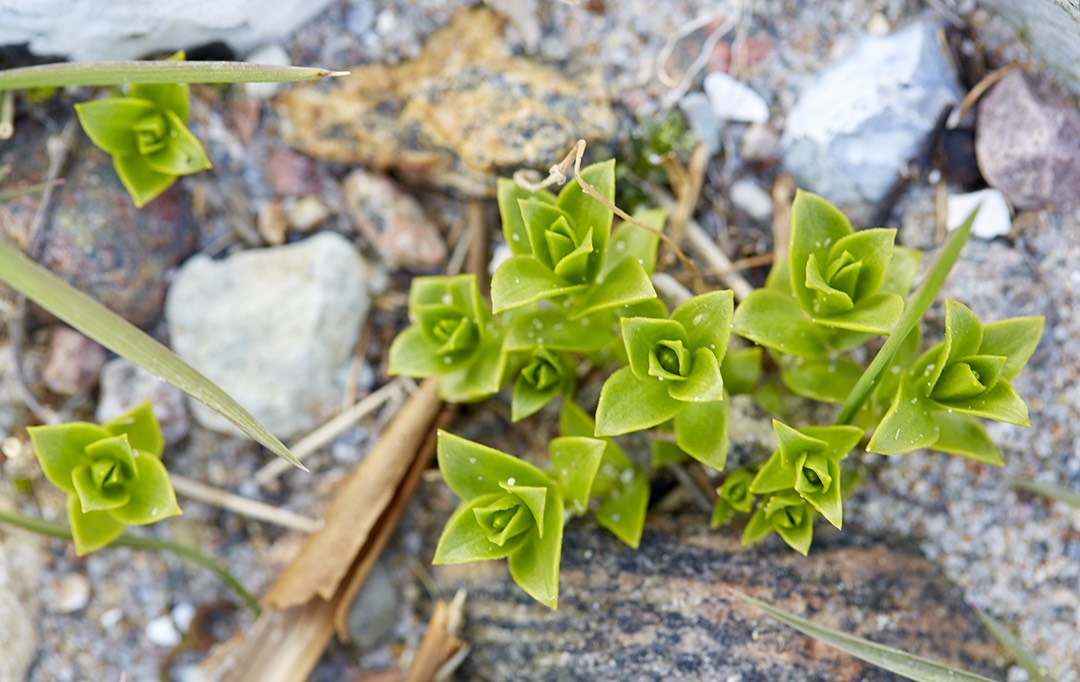
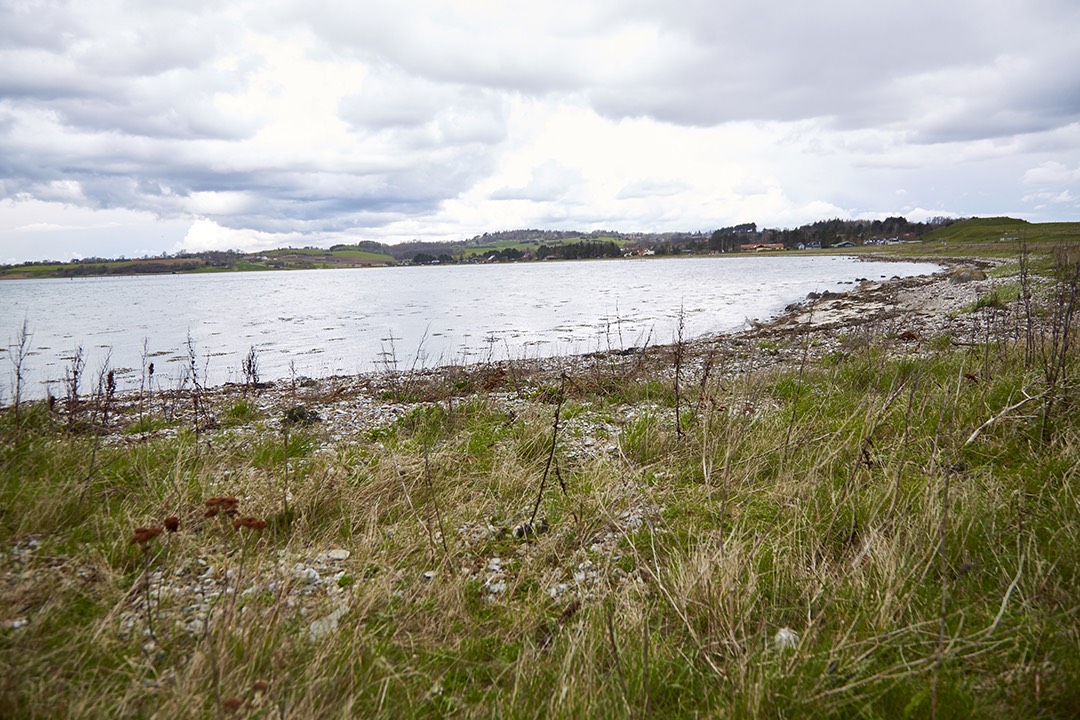
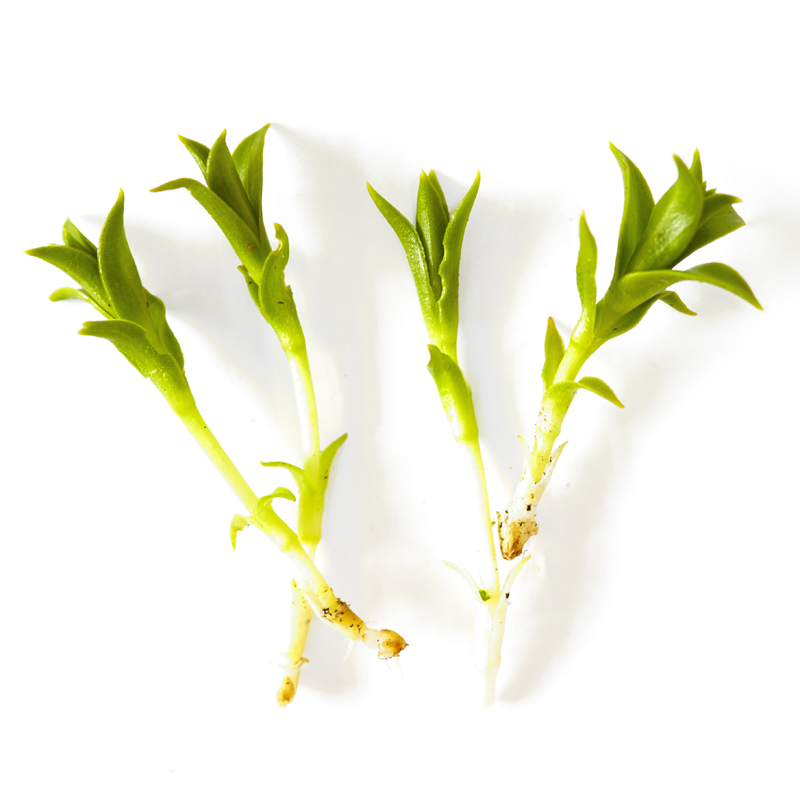
Sea sandwort
The sea sandwort is also called beach cucumber because of its taste. In Iceland, the plant is a mainstay of the local diet, and is traditionally eaten fermented.
-
Where to Find It
Sea sandwort is one of the few herbs that grow well in loose sand on the beach. You can find it along the entire breadth of the beach, from water’s edge up to the dunes. It often grows in low clumps that blanket the beach in green.
Salt marshes, beaches.
-
When to Find It
As long as temperatures are mild, you can pick sea sandworts from May until October. In the middle of the growing season, it develops flowers and turns tough and fibrous. After flowering, it continues growing and its top shoots again become soft and succulent.
Entire plant: May, June, July, August, September, October.
-
How to Spot It
The sea sandwort has a very distinct appearance and most closely resembles a small Christmas tree with succulent, triangular branches. It is typically 5-15 cm tall and has sets of four small leaves that sit right above each other along its stem. When the sea sandwort blooms, small white and yellow flowers open in each corner of its top leaves.
-
How to Pick It
Because it grows in loose sand, it is very easy to accidentally uproot the sandwort. Carefully clip or cut off the top part of the plant—both leaves and stem are edible—and leave a few sets of leaves at the bottom so that it will continue to grow. Once the plant is older and its leaves have become tougher, focus only on the tender parts up top. The sea sandwort takes on the flavor of the surface on which it grows, including downright foul ones. Take your time searching for the very best-tasting specimens.
-
NB!
The Ministry of Environment and Food of Denmark recommend limited consumption, due to limited knowledge and studies.
Risk of misidentifying the plant
There is no risk of mistaking the plant for another dangerous or undesirable plant.


